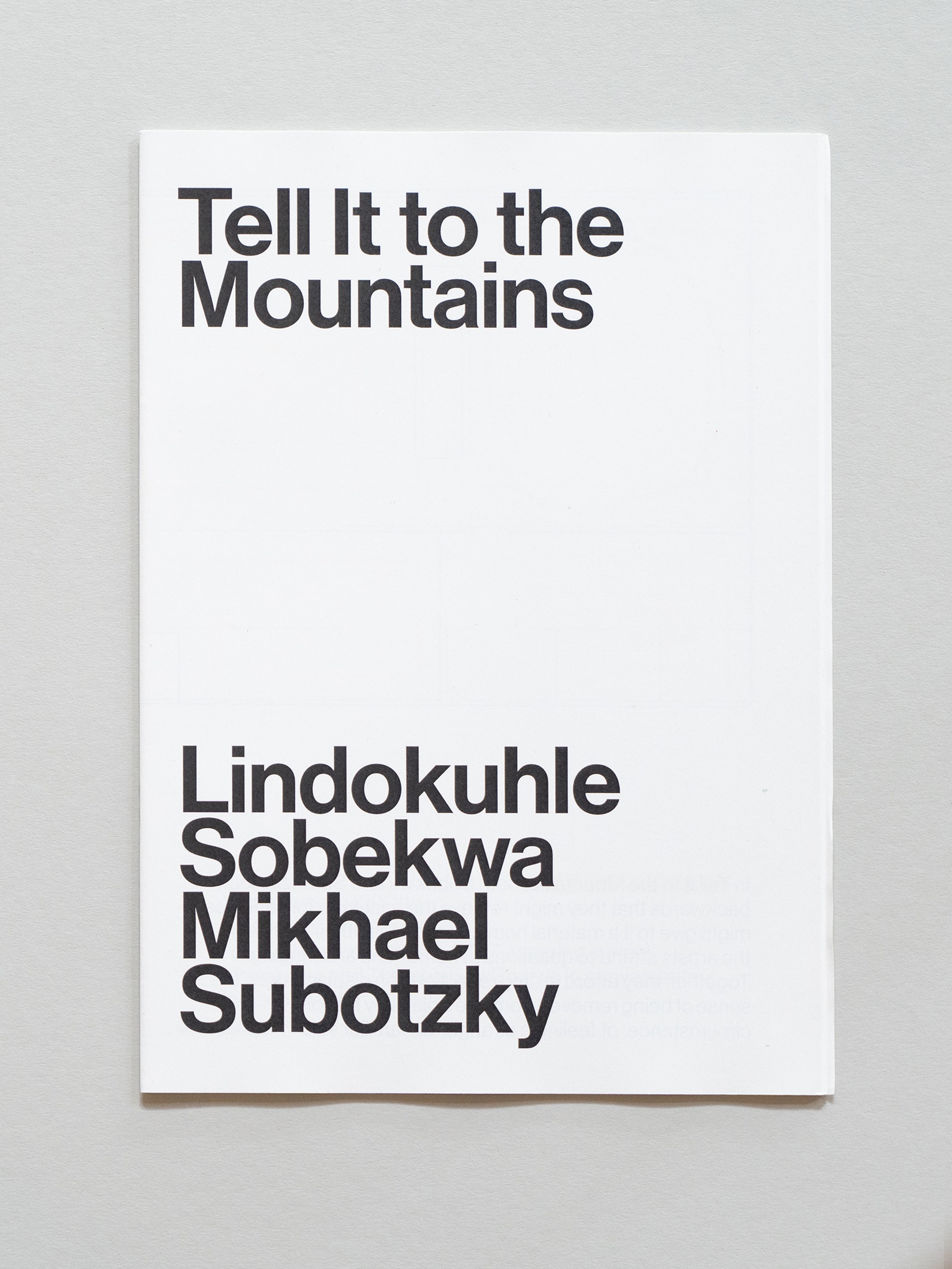
Design:
Ben Johnson
Writers:
Lucienne Bestall
Thembinkosi Goniwe
Khanya Mashabela
Sean O'Toole
Editor:
Sara de Beer
Tell It to the Mountains in A4’s gallery emerged from a gesture of return. Throughout Lindokuhle Sobekwa’s residency at A4 last year, he reassembled his photographic practice out of sequence and time, building a horizon line onto the foundation’s walls. The exhibition’s title reimagines that of James Baldwin’s 1953 novel – Go Tell It on the Mountain – and the African-American spiritual of the same name. “Go back to where you started,” Baldwin writes, “or as far back as you can, examine all of it, travel your road again and tell the truth about it.”
The hub of the exhibition is a large tree. Titled Mthimkhulu II, this autobiographical installation by Lindokuhle references the ilhathi lesiXhosa, those remaining thickets of forest that are sacred to the amaXhosa and can be found in the Eastern Cape of South Africa. Extending the thematics this tree proposes, Mikhael Subotzky’s four-channel video installation Moses and Griffiths (2012) offers a filmic portrait of Moses Lamani and Griffiths Sokuyeka that asks after the distance between ‘home’ in Tantyi, a township outside Makhanda (then known as Grahamstown), and ‘work’ in the city’s colonial structures. This in turn offers reflections on distance – between the promises of reformation and its realities in practice – between the fictional stories that are told of history and those of lived experience. Khanya Mashabela speaks of “two Moses and two Griffiths,” who “cannot be reconciled or easily separated. The ‘ideal’ version of their identities, as demanded by the institutional structures in which they work, is hostile to their core identities outside of their labour.”
Tell It to the Mountains, writes Sean O’Toole, is “rooted in friendship and a shared enquiry into the meaning of home and belonging.” Mikhael and Lindokuhle’s affinity is one of friends as well as colleagues. Here, Mikhael becomes an interlocutor and conversation partner to the installation of Lindokuhle’s photographic series Ezilalini (The country) (2018 – ongoing). The series traces Lindokuhle’s return to his ancestral home in the Eastern Cape, where his generational family resides and the inzinyana (ancestors) can be felt. The countryside, with its areas of trees and forest, is of particular importance to facilitate these connections. Lindokuhle recalls a story about the inzinyana; that they have forsaken the cities – of Johannesburg and the area of Thokoza where he grew up – because the children of the Eastern Cape arrive there to become lost, never to return. The disappearance of his sister Ziyanda is explored in I carry Her photo with Me (2017–ongoing), which is staged in Tell It to the Mountains as a slideshow with a musical score by Nduduzo Makhathini.
Lindokuhle’s desire to talk through his practice in his mother tongue during his residency led to a series of conversations between the photographer and Thembinkosi Goniwe, which is accessible as audio in the gallery. In the words of Lucienne Bestall: “In Tell It to the Mountains, both Sobekwa and Subotzky look backwards that they might retrieve the past from forgetfulness; might give to it a material home.” That material is of the tangible as well as the metaphysical, of spirit and bone.
Postponed by a fire that damaged A4’s Gallery in December 2020, Tell It to the Mountains also marks A4’s reopening to publics after renovations.